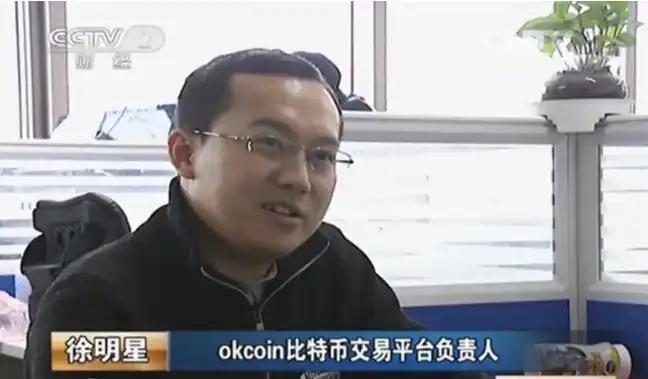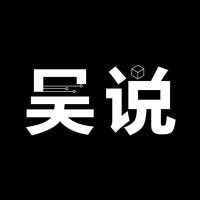Author: Liu Honglin
During the May Day holiday, I drove through the Hexi Corridor and finally returned eastward to Xianyang.
Standing here, one involuntarily recalls familiar names from textbooks - half-liang coins, five-zhu coins, Chang'an, Han envoys to the Western Regions... If the Silk Road is a channel of civilization exchange, then Xianyang is its starting point - not just the departure point of the Silk Road, but more importantly, the origin of imperial value order.
Xianyang's role in history is that of a system initiator. It was not just the capital of the Qin Empire, but also the starting point of a comprehensive system of "standardizing measurements, regulating credit, and organizing value circulation". Today, when we talk about "stablecoins", "Bitcoin", and "on-chain settlement", it seems like a technological innovation, but it's actually an old problem: who issues currency, how is the price determined, and what maintains the value consensus?
"Inheriting Qin" Stablecoin: Practicality Trumps Everything
After unifying the six kingdoms, the first thing Qin did was not tax expansion, but standardization - unifying measurements, unifying writing, and of course, currency. Introducing the "half-liang coin" was a nationwide integration of monetary form and value standards, backed by administrative power.
The Han Dynasty further refined this structure. In the early Western Han, multiple currency system reforms were carried out, ultimately establishing the "five-zhu coin" as the national currency, and promoting the monetary system to serve foreign trade through border markets and gold settlements, forming the monetary foundation of the Silk Road.
Looking at stablecoins today, the logic is very similar. USDT is considered more stable than local fiat currency in many countries and regions. Not because it's politically stronger, but because it circulates more widely, has more transparent credit, and lower transaction costs.
Isn't this a "Xianyang-level" functional node? It has no borders, but it has exchange rates; no emperor, but it has market consensus.
USDT, USDC and such coins don't rely on computing power or "decentralization" faith. They rely on anchoring, auditing, custody, and settlement efficiency - behind these elements is actually a system, just not a national system, but a new version composed of chain standards, commercial consensus, and quasi-regulatory combinations.
This "new type of Xianyang" no longer relies on terracotta warriors, city walls, and imperial edicts, but runs on chain addresses, circulation protocols, and "I'll acknowledge your transfer" trading habits. It may not be legal, but it's indeed practical; it may not be stable, but it's a solution usable by most people in reality.
Its advantage lies precisely in not "opposing all centers" like Bitcoin, but selectively inheriting old systems and connecting with financial infrastructure, quickly becoming mainstream in scenarios like cross-border payments, grey finance, and exchange rate hedging.
In other words, it's born for use, not expression; an interface to the real world, not a chip in an ideal country. It's like the "five-zhu coin" of the digital age, emphasizing efficiency, compatibility, and universality - not resisting the old order, but digitally rewriting the system.
"Anti-Qin" Bitcoin: Opposing All Centers
Bitcoin's logic stands almost completely opposite to the system.
It doesn't recognize the state, has no center, and doesn't require you to "believe" any institution. What it wants is precisely "de-trust" - don't believe what anyone says or prints, rules are written in code, verified network-wide, and nobody can change them. Consensus relies on computing power, order on rules, with extreme logic and cold principles.
This design is not a random idea, but a response to long-standing issues in centralized monetary systems.
In late Qin, when finances were tight, the court secretly reduced the weight of "half-liang coins", appearing unchanged but significantly devalued, causing market currency value fluctuations and public trust collapse. The "Shiji·Pingzhun Book" mentions "coin weights inconsistent, people doubt and distrust", showing how central credit's wavering can destabilize the entire currency system.
The early Han was similar. While the central government tried to unify coinage rights, local private minting was prevalent, with enforcement lacking. The "Han Shu·Shi Huo Zhi" wrote that "private coin minters were many, prohibited but unstoppable", with mixed currency types and inconsistent standards, making the civilian transaction system almost self-operating.
Bitcoin is a thoroughly technological response to this "credit overflow + uncontrollable system" problem. It doesn't try to strengthen the center but to eliminate it: not relying on the state or commercial credit, only on hard rule constraints.
It's indeed unsuitable for high-frequency payments, with significant price volatility and difficulty entering daily life. But it's not meant for mainstream service - it's a backup for margins, offering unique "safety" in scenarios of financial crises, hyperinflation, and political turmoil.
It's not for convenience, but for escape; not to make the system smoother, but to provide a way out when everything is completely out of control.
After Xianyang: Freedom of Choice
Qin's laws have been followed for generations. To some extent, we can say "Bitcoin is anti-Qin, stablecoins are Qin-inheriting". Bitcoin represents deep distrust in "centers will corrupt", while stablecoins are a realistic response to "systems must evolve".
History has long proven that truly stable circulating currency is never because "everyone likes it", but because "the system can support it". And a system's ability to support depends not on ideals, but on rules, governance, and compatibility. Whether you mint currency by decree or write on a chain, the mechanism that "most people recognize" is your "system origin point".
Now, those system origin points have shifted from Chang'an and Washington to Tether clearing addresses, USDC audit reports, EVM compatible interfaces, or some globally recognized on-chain stablecoin contract.
Qin's legacy remains, just transformed from cities to protocols. And choosing to inherit or oppose Qin is actually a choice made by each user when clicking the "send" button.







